“Though consumer action can take many creative and powerful forms, we do not have to be reduced to the role of consumers selecting from seductive convenience items. We can merge appetite with activism and choose to involve ourselves in food as co-creators.” – Sandor Ellix Katz
In partnership with The Fermentary, Sticky and Stinky was a day-long event which celebrated a love for fermentation and the work that acclaimed author Sandor Ellix Katz has inspired. This was part of the Ferment Yourself Wild tour with The Fermentary and hoped to take a deep dive into the unusual and eclectic world of fermentation. For the uninitiated, Sandor Ellix Katz is a James Beard Award winner, New York Times bestseller and a fermentation revivalist. His books, “The Art of Fermentation” and “Wild Fermentation”, have helped to catalyze a revival in the art of preserving food.
When one first forays into the world of fermentation, the word that often comes up is culture. Coming from the Latin term cultura, culture means “to cultivate”. In the case of fermentation, culture literally relates to cultivating microorganisms to produce a food product. We call starters that we add to milk to initiate fermentation, cultures.
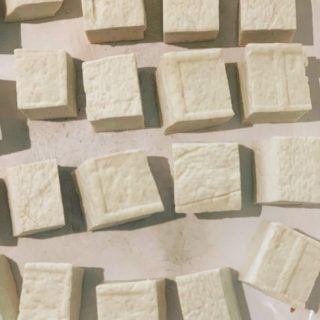

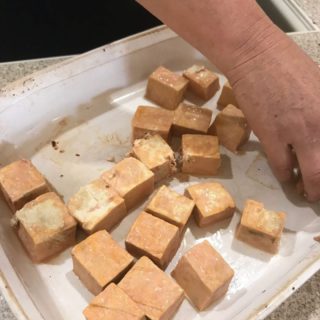
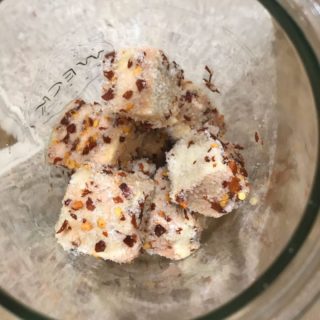
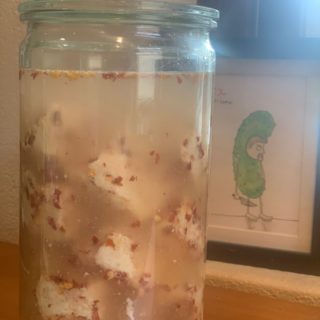

On a broader sense, culture also constitutes the agricultural and culinary techniques that humans pass from generation to generation. Though preservation used to be at the heart of our culture, somewhere along the way, we stopped making our own pickles and ferments. Many of our artisanal food traditions are disappearing as we leave these ferments to machines. At the same time, these industrialised processes, while satisfying our desire for speed and instant gratification, have led to sacrifices in flavor that only time can provide.
The importance of preserving our preservation culture and relearning these artisanal techniques was brought to light at the event. Mediated by Dani Valent, the panel included food luminaries Sharon Flynn, Martin Boetz, Tony Tan and Harry Mangat. The narratives and perspectives shared communicated the well-needed consideration of the processes through which we can preserve and embed recipes and rituals in our future culture.
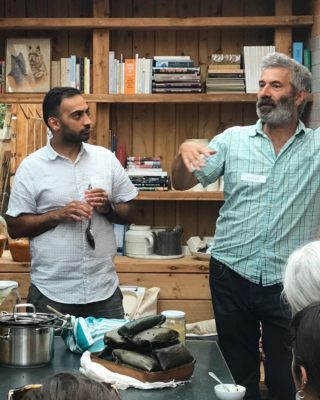
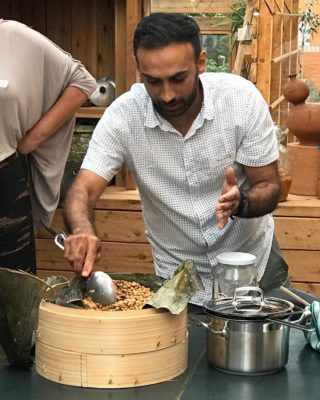
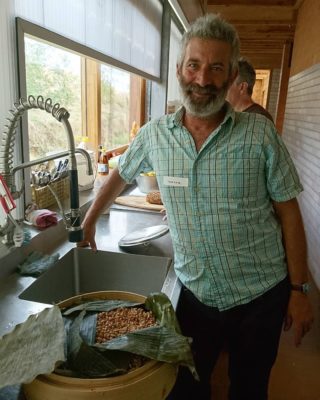
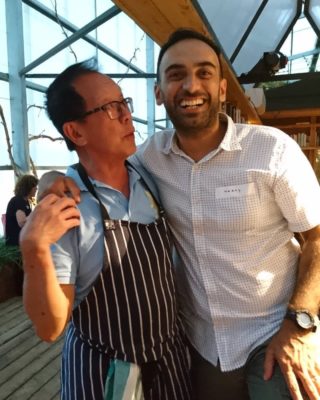
Preservation techniques are vibrant in Japanese, Korean and European cultures; think, kimchi, miso, natto and koji, sauerkraut and cheese, for starters. Many of these ferments are now commonplace in supermarkets and cookbooks and have paved the way in generating interest and conversation around fermentation and preservation. However, there are so many other unexplored ferments from lesser known cuisines and cultures – all of which are pertinent to having a vibrant food conversation.
As the name of the event suggests, the day explored some of the smellier ferments – to learn how to ferment them, how to cook them and how to enjoy them. There was a focus on some of the lesser-known Chinese preservation practices, some of which have sadly been industrialized.
One of the ferments explored on the day was hairy tofu, also known as mao tofu, a fermented tofu that is covered with mold akin to white fur. While modern factories use quicker methods to mass-produce this tofu, the slow fermentation of tofu allows for a deeper, richer flavour. Fried and served up with a fiery black bean and chilli sauce, the tofu’s hair crisped up while the center was tender and moist, its taste slightly sour with earthy undertones.
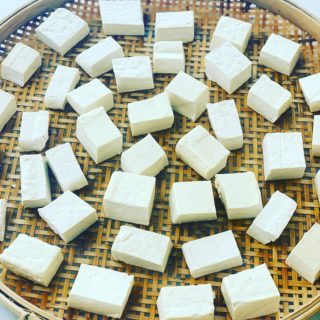
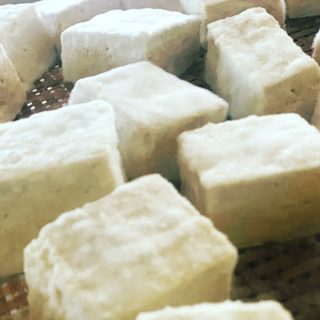


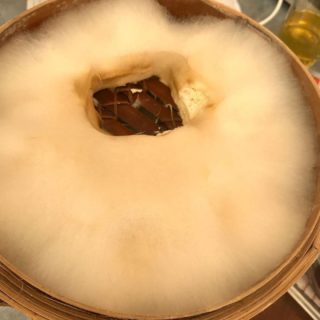
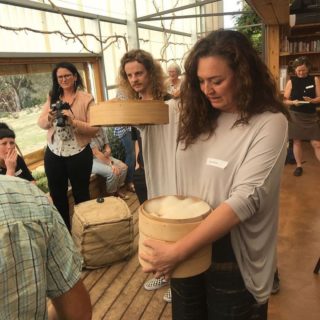
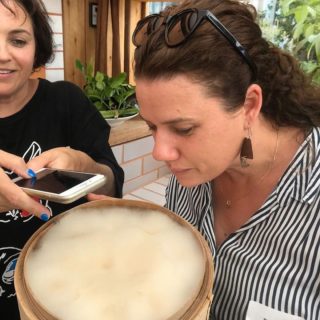
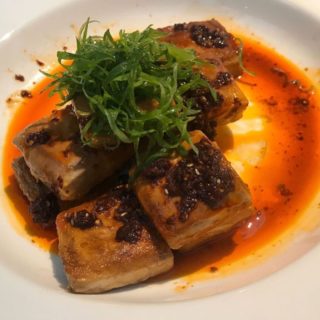
To live up to the name of the event, tempoyak was prepared from durian, arguably the world’s most pungent fruit. Tempoyak is a Malay condiment, resulting when durian is salted and aged at room temperature, that develops notes of pineapple in the fermentation process. As a treat for the participants, Tony Tan tossed the tempoyak with steamed rice and fresh herbs such as kaffir lime leaves and coriander leaves.
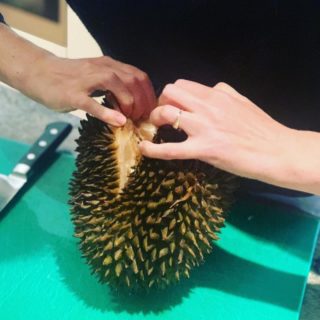
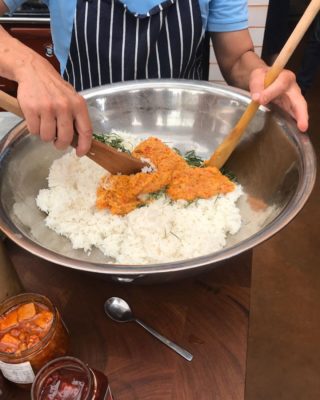
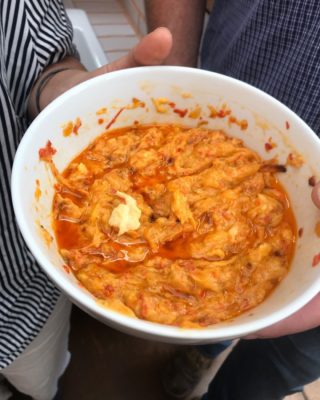
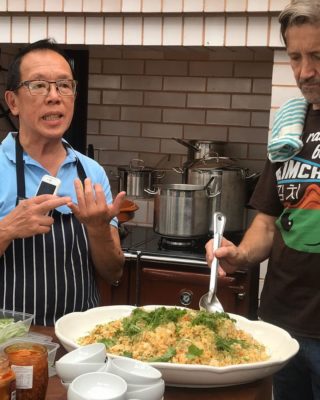
With the preparation of naem, a spotlight was also shone on Thai cooking, a cuisine whereby preservation has been less recognized. Naem is commonly used to refer to soured pork sausages, but can also refer to the fermentation style used to sour these sausages, so it can be understood in the context of both a noun and a modifier. The hallmark of naem is a sourness of the finished meat product, which comes from the process of lactic acid bacteria digesting the sugar from the sticky rice and transforming it into lactic acid. A sticky rice and garlic paste was applied to Berkshire pork from the Longhouse farm and allowed to ferment, and served up for dinner.
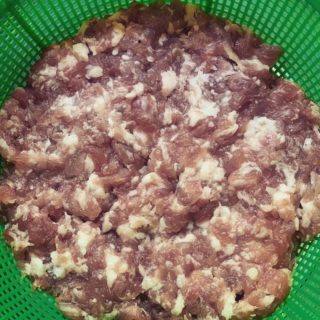
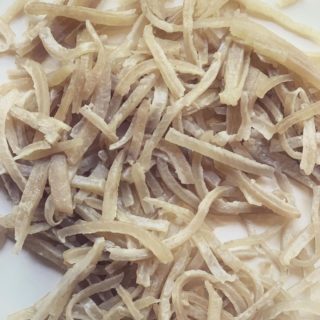
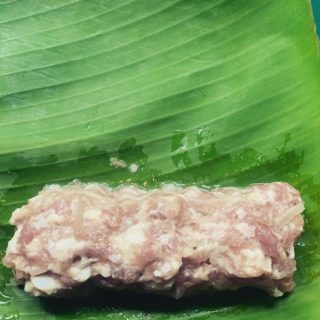
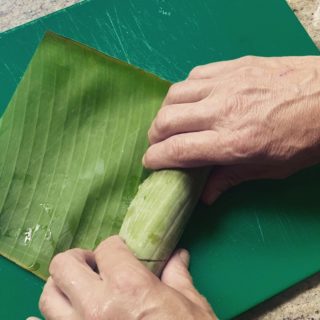
Like Michael Pollan puts it, to ferment your own food is to “lodge an eloquent protest – of the senses – against the homogenization of flavours and food experiences now rolling like a great, undifferentiated lawn across the globe”.
If the Coronavirus pandemic has shown us anything, it is how we have been such passive consumers, dependent on a fragile economy. Learning the art of fermentation and taking an active role in preserving our preservation culture is a declaration of independence. In so doing, we can create unique products which express ourselves and the places in which we inhabit. Because your naem or hairy tofu will be nothing like mine or anyone else’s.
Book Classes